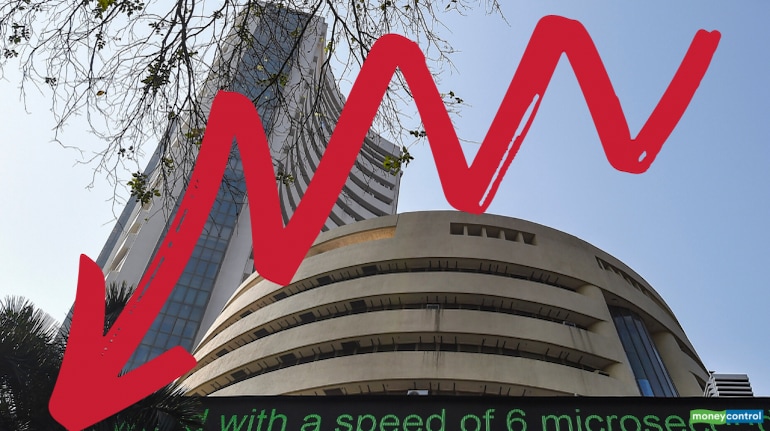



If you think that the present global selloff that has pushed the Indian market in a bear territory is the worst you have seen, do remember the 2008 financial meltdown when the Nifty lost 40 percent of its value in about a month.
But is the comparison fair? The 2008 financial crisis got accentuated following the collapse of Lehman Brothers. Well, maybe not. Though it is mimicking the 2008 crisis, when the global financial system got a jolt, the coronavirus-led downturn is not of the same magnitude.
The Nifty50 has lost more than 20 percent from its record high of 12,430 registered on January 20, effectively putting the index in a bear phase but we have seen the worst.
In 2008, though the correction started in January but things came to a head when Lehman Brothers went bankrupt after the Federal Reserve declined to guarantee its loans on September 15.
Reacting to the news, the Nifty fell from 4,237 to hit a low of 2,525 on October 24 of that year, translating into a decline of about 40 percent. The global selloff wiped out more than a third of the Nifty value in about a month and more than 50 percent in the calendar year.
The selloff being seeing now is largely fear-driven as coronavirus spread to more than 110 countries, creating panic.
Shares across the globe have also come under pressure after the World Health Organization (WHO) declared the outbreak a pandemic, as infections have been reported from all continents but one.
“If we look closely, this has not caused any damage to the financials of the companies and this slowdown is temporary due to diminished global demand and logistics issue along with incapacitated supply-chain partners. This virus will affect the current quarter earnings and therefore having no impact on the financials and solvency of the companies,” said Gaurav Garg, Head of Research at CapitalVia Global Research Limited- Investment Advisor.
“The 2008 crisis was triggered due to a bloated economy of a world power, which relied mainly on instruments that derive value from bad assets. It started with banks which are the backbone to business sector anywhere in the world and liquidity crisis in banks had a series of repercussions, which brought the economy to a standstill,” he said.
Garg added that though the coronavirus outbreak was mimicking the environment of the 2008 crisis, it was not of the same magnitude. China had shown that the virus could be contained by exhaustive and extensive measures, he said.
The subprime crisis of 2008 seems to be significantly different from conditions created by the coronavirus fear.
The 2008 financial crisis engulfed in itself genuine liquidity problems along with market participants losing confidence in equities. But as coronavirus fears will recede, we could see a swift rally across the globe, including India.
“The subprime crisis was intertwined with massive credit creation; creation of products with high-risk junk bonds, which eventually led to suction of liquidity from the entire economy,” Umesh Mehta, Head of Research, Samco Securities, told Moneycontrol.
“The current selloff is on a different footing--which is an outcome of fear of coronavirus being a pandemic which could possibly slow down the economic activity across the globe. No sooner the fear recedes, bounce-back would be sharp and quick unlike the year 2008, where the recovery was slow,” he said.
Slowdown fears loomingThe US government 10-year bond yield has corrected to 0.66% from 1.75% a month back. These levels are even below the trend seen in the global crisis of 2008-2009, which is a point of concern.
But experts feel that measures taken by the government and rate cuts by central banks should help economic activity bounce back in the next two-three months.
“We foresee both the scenario (2008, and 2020 meltdown) as very different and current scenario not as worse being speculated. But at the same time we are confused and concerned regarding the negative movement of US bond yields, reversing towards zero,” Vinod Nair, head of research at Geojit Financial Services, told Moneycontrol.
“While when we look are the pandemic effect, we feel that it will get normal in the next two-three months and economic activities will reverse. The number of new cases in China has reduced tremendously, today it was around 30 from around 2000 a week back,” he said.
Nair added that lockdowns, quarantine and travel restrictions was the way to achieve it. The oil crisis triggered by Saudi Arabia and Russia’s spat over prices and production had added to the problem. The situation would reverse once the demand improves and the two sides realise that they both stand to lose from the standoff. “So this situation seems more like a short-term reversal of economic growth,” he said.
Disclaimer: The views and investment tips expressed by experts on Moneycontrol.com are their own and not those of the website or its management. Moneycontrol.com advises users to check with certified experts before taking any investment decisions.
Discover the latest Business News, Sensex, and Nifty updates. Obtain Personal Finance insights, tax queries, and expert opinions on Moneycontrol or download the Moneycontrol App to stay updated!
Find the best of Al News in one place, specially curated for you every weekend.
Stay on top of the latest tech trends and biggest startup news.